Fall 2015 Colloquium: Dr. Steve Frank, Associate Professor at North Carolina State University11/19/2015
Increased Temperature Aids Pests in Overtaking Cities It has been observed for over one hundred years that plant insect pests such as scales, white flies, and thrips are more prevalent in urban areas than in forests. Many scientists have sought to understand this phenomenon with hypotheses on enemy release and abiotic influences. Enemy release relies upon the absence of natural enemies such as predators and parasitoids of pest insects in urban areas. In the resulting absence of enemies, populations of pests are allowed to build to extraordinarily high numbers. Abiotic influences, on the other hand, are aspects of the physical environment such as temperature that lead to increased population sizes. Dr. Steve Frank of North Carolina State University argues that the main driver in the high occurrence of pests in urban areas is not natural enemies but increasing temperatures in cities. Dr. Frank and his lab work with scale insects in Raleigh, North Carolina to elucidate the importance of temperature on pests, how pests impact tree health, and predicting effects of global warming. Does temperature affect the insect pests? Gloomy Scale, Melanaspis tenebricosa, is an excellent model for studying the importance of temperature on pest insects as it has a long history of localized high abundance in Raleigh. The earliest report on gloomy scale by Zeno Metcalf in 1912 heralded this insect as being the most important shade tree pest in North Carolina. Since that report, it has remained in high numbers in Raleigh but not in neighboring forest areas. Looking at heat maps of the area, Dr. Frank’s lab surveyed red maple trees within a gradient of temperatures in Raleigh and observed that gloomy scale abundance increased with temperature (Dale and Frank. 2014b). The question of why they were seeing this trend spurred additional investigation. (Left) Gloomy scales covering the tree’s branch making the bark appear rough and bumpy. Photo by Adam Dale. (Right) Zoomed in on the branch, you can see that each bump is an individual scale with its brown armor blending into the branch. The red dot in the middle is scale insect with its armor removed revealing the soft insect underneath. Photo by Matt Bertone The lab found that body size as well as egg production increased with temperature (Dale and Frank. 2014b). With increased egg production there is a corresponding increase in population growth, which helps the gloomy scale reach high densities. In short, because temperatures are higher in cities, gloomy scale is able to respond with increased body size, reproduction, and growth rate. Does temperature and pest abundance affect tree health? Dr. Frank’s lab wanted to investigate the effects of a possible interaction between warming and pests on tree health. To test this, they assessed the condition of all the red maple trees studied previously and then expanded the study to analyze 8462 trees inventoried by the city of Raleigh (Dale and Frank 2014a). Results showed that trees in hot locations, where scale abundance was therefore higher, were more than twice as likely to be in poor condition than trees in cold locations. The lab measured the water potential of the trees to help explain the physiological link between temperature and tree condition. Water potential in trees is linked to the ability to move water from the roots to the shoots. Dr. Frank’s lab found that water potential decreased with increasing site temperature, meaning that the trees were under higher drought stress in hotter areas (Dale and Frank 2014a). Linking temperature effects to both pest insects and tree health gives a holistic picture of the health and functioning of trees in urban landscapes. Can we predict the effects of global warming? 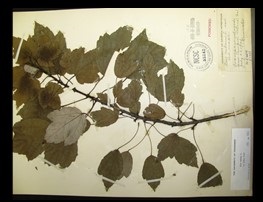 Historical red maple sample from an herbarium, which was assessed for scale abundance. (Youngsteadt et al. 2014. Global Change Biology) Historical red maple sample from an herbarium, which was assessed for scale abundance. (Youngsteadt et al. 2014. Global Change Biology) As urban areas are hot patches in the broad landscape, perhaps they can be used as proxies to look at the future of climate change. To tackle this idea, Dr. Frank’s lab used historical samples of red maple from herbarium collections, dating as far back as 1895. These samples were collected from rural areas around the southeast, and scales remain visible on them. The researchers found that the change in gloomy scale abundance with temperature variation was congruent across rural historical and modern urban samples (Youngsteadt et al. 2014). They also resampled trees at some of the historical sites and found that in most cases, the rise in temperature over the last several decades has led to an increase in gloomy scale abundance (Youngsteadt et al. 2014). Thus, it seems plausible that the relationships and patterns between scale insects and temperatures in cities could be used as an informative tool to predict potential outcomes of global climate change. What can we do today to help manage effects of temperature in cities? Urban areas around the world are becoming larger and hotter. As Dr. Frank’s lab has shown, the increase in temperature leads to more pest outbreaks, and these pest outbreaks have negative consequences for ecosystem services such as carbon sequestration and air purification. As temperature increases, cities will need to consider how to manage the effects on urban trees. For example, pest outbreaks may start occurring earlier in the season (Meineke et al. 2014), so scouting for pests should be increased. Cities should also try to plant more tree species and varieties that are resistant to the effects of increasing temperature on pest outbreaks and water stress. This may mean breeding or genetically modifying new varieties for cultivation. Concluding Thoughts In a broader sense, the decrease in urban forest canopy cover will have many negative effects both on wildlife and on humans. Studying urban trees will help identify problems, and potentially elucidate future effects of climate change. These effects threaten not only urban trees but also natural areas; therefore, understanding the impact of temperature on urban trees can help predict and prepare for the future of climate change across temperature gradients in landscapes. References: Dale A., S. Frank. The Effect of Urban Warming on Herbivore Abundance and Street Tree Condition. Plos One. 2014a. Dale A., S. Frank. Urban warming trumps natural enemy regulation of herbivorous pests. Ecological Applications. 2014b. Meineke E., R. Dunn, S. Frank. Early pest development and loos of biological control are associated with urban warming. Biology Letters. 2014. Youngsteadt E., A. Dale, A. Terando, R. Dunn, and S. Frank. Do cities simulate climate change? A comparison of herbivore response to urban and global warming. Global Change Biology. 2014. About the Authors:
Jessica Grant is a master’s student currently working on kudzu bug (Megacopta cribraria) pest management. For more information on her work see this site mdkudzubug.org Aditi Dubey is a Ph.D. student looking at the effects of neonicotinoid seed treatment in a three-year crop rotation. Stalk-eyed flies reveal more than meets the eye - investigating sexual selection, speciation & genomic conflict Stalk-eyed flies are another one of nature’s curious and fascinating examples of biodiversity and an extreme result of sexual selective forces. These insects are true flies (Diptera) in the family Diospidae, typically distinguished by their unique eye stalks, from which they get their name. Dr. Gerald Wilkinson of the biology department at the University of Maryland has been conducting research on how genetic mechanisms may influence the outcome of evolution, specifically sexual selection, speciation and genomic conflict in stalk-eyed flies. All diospid flies have eye stalks, although some males display extremely long and seemingly disadvantageous stalks. When a species is sexually dimorphic, there is a physical difference between females and males, such as the difference in plumage between peacocks. In this case, the eye stalks are dimorphic with males having the longer eye stalks, and females having short eye stalks. While not all species of stalk-eyed flies are sexually dimorphic, sexual dimorphism has evolved independently several times in this genus. Based on Dr. Wilkinson’s research, the development of these intriguing eye stalks appears to be a product of sexual selection. The female flies favor mating with males with larger relative eye stalks to body size, pushing for directional selection for longer and longer eye stalks over evolutionary time. To test some predictions, Dr. Wilkinson artificially selected for both smaller eye stalk populations and larger eye stalk populations in the lab using Teleopsis dalmanni. Intriguingly, he found that after 20 generations, males from short eye stalk lines were producing only daughters and some males from longer eye stalk lines were producing predominantly sons. Dr. Wilkinson had stumbled onto X drive, an example of genomic conflict. Genomic conflict arises when certain genes selfishly try to push themselves into the next generation even at the expense of the host/population. In the populations of short stalk eyed flies, X drive influences spermatid elongation. Those that elongate properly contain the selfish driving element on the X chromosome (X) which in turn leads to a female biased population and spread of XD. Unchecked, this would lead to the eventual demise of the population. The discovery of X drive in T. dalmanni through artificial selection on male eye span, is a convincing catalyst for sexual selection. Because females that mate with XD carriers can lead to population extinction, there is pressure for females to avoid mating with these short stalk-eyed males. A preference for males with long eye-stalks can develop because 1) the population survives and 2) long eye-stalks are a good advertisement for the lack of XD. Because of this, Dr. Wilkinson predicted and found that eye span genes are X-linked and are in linkage disequilibrium with the driver element (i.e. short eye stalks genes stay close together with the driver element on XD). Sexual selection should eliminate drive except if recombination or imprecise female choice occasionally occurs. 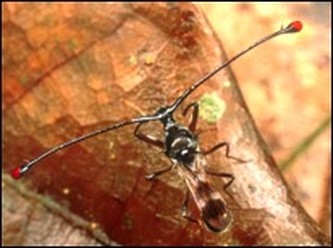 Having unraveled some of the secrets to mating in stalk-eyed flies, Dr. Wilkinson turned his curiosity to another aspect. He was interested in identifying mechanisms for reproductive isolation. Which mechanism is more important, prezygotic isolation (e.g. differences in mating, sperm transfer, sperm survival, or fertilization) or postzygotic isolation (e.g. hybrid inviability or hybrid sterility) for the creation of new species? Using very similar species of southeast Asian stalk-eyed flies (cryptic species), Dr. Wilkinson and his lab determined that reproductive isolation increases with genetic distance and that those populations evolve postzygotic isolation rapidly, but prezygotic isolation relatively slowly over evolutionary time. In particular, hybrid males between closely related species were sterile. Dr. Wilkinson hypothesized this may be due to cryptic drive. This is where drive is hidden because another genetic element (a suppressor) is counteracting its effects. If the suppressor is removed the drive is suddenly active. Through breeding experiments he ultimately found the presence of both cryptic X and Y drive. Their suppressors were found on the non-sex chromosomes and were in the same genomic regions as factors that caused male hybrid sterility. So while stalk-eyed flies are a natural wonder to behold, it appears they have more to offer than meets the eye. From them we have learned that genomic conflict can influence sexually selected traits and that reproductive isolation can evolve rapidly due to post-mating sexual selection and X drive. Much of this work is ongoing and there is more to learn about genomic conflict and drive system using diospids as model organisms. References: Baker, R.H., Narechania, A., DeSalle, R., Johns, P.M., Reinhardt, J.A. and Wilkinson, G.S. 2015. Spermatogenesis drives rapid gene creation and masculinization of the X chromosome in stalk-eyed flies (Diopsidae). Genome Biology and Evolution (in review) Baker, R.H. and Wilkinson, G.S. 2010. Comparative genomic hybridization (CGH) reveals a neo-X chromosome and biased gene movement in stalk-eyed flies (genus Teleopsis). PLoS Genetics 6(9): e1001121 Christianson, S.J., Brand, C.L., and Wilkinson, G.S. 2011. Reduced polymorphism associated with X chromosome meiotic drive in the stalk-eyed fly, Teleopsis dalmanni. PLoS ONE 6:e27254. Christianson, S.J., Swallow, J.G., and Wilkinson, G.S. 2005. Rapid evolution of postzygotic reproductive isolation in stalk-eyed flies. Evolution 59(4):849-857 Reinhardt, J.A., Brand, C.L., Paczolt, K.A., Johns, P.M., Baker, R.H. and Wilkinson, G.S. 2014. Meiotic drive impacts expression and evolution of X-linked genes in stalk-eyed flies. PLoS Genetics 10(5):e1004362 Rose, E.G., Brand, C.L., and Wilkinson, G.S. 2014. Rapid evolution of asymmetric reproductive incompatibilities in stalk-eyed flies. Evolution 68:384-396 Wilkinson, G.S., Johns, P.M., Metheny, J.D., and Baker, R.H. 2013. Sex-biased gene expression during head development in a sexually dimorphic stalk-eyed fly. PLoS ONE 8:e59826 Wilkinson, G.S., Christianson, S.J., Brand, C.L., Shell, W. and Ru, G. 2014. Haldane's rule is linked to extraordinary sex ratios and sperm length in stalk-eyed fles. Genetics 198:1167-1181 Wilkinson, G. S., Presgraves, D.C. and Crymes, L. 1998. Male eye span in stalk-eyed flies indicates genetic quality by meiotic drive suppresion. Nature 391:276-279 gAbout the authors: Jackie Hoban is a first year Master's student in Paula Shrewsbury’s lab, researching biological control of the invasive, wood-boring pest, emerald ash borer, Agrilus planipennis (Coleoptera: Buprestidae). Jonathan Wang is a PhD student in Raymond St. Leger’s lab. He is studying Drosophila immunity and fungal pathogenesis. Mengyao Chen is a Master’s student in Dr. Leslie Pick’s Lab. Her research focuses on segmentation genes in Brown Marmorated Stink Bug (BMSB, Halyomorpha halys). Her current work is looking for orthologs of pair-rule genes in BMSB, and studying their expression and functions using RNA in situ hybridization and RNAi. Evolution Occurring Before Our Very Eyes: Parasitoids Diverging Based on Host’s Food Source Parasitic wasps, or parasitoids, lay their eggs inside other insects or animals, and their larvae feed on that insect or animal once they hatch. Many parasitoids lay their eggs in the larvae of other insects, for example caterpillars. Caterpillars often have adapted to feed on specific plants, called “host plants,” that may have chemical defensive properties (allelochemicals) that the caterpillars are able to cope with and sometimes incorporate in to their own chemical defenses. When parasitoids use these caterpillars as hosts, they too must adapt to the host plant’s toxins. These phenomena create a very interesting relationship between host plant, host insect, and parasitoid. The plant tries to defend against the host using toxins, the caterpillar incorporates and becomes immune to those toxins, and finally the parasitoids must adapt to the toxins present in the caterpillar host to guarantee its larvae can survive inside the host and eventually use it as food. Dr. Karen Kester received her PhD from the University of Maryland under the guidance of Dr. Pedro Barbosa researching the ability of parasitic wasps to adapt to the particular food plants and plant toxins of their insect hosts Parasitic wasps are a diverse group containing over 750,000 species, but the mechanisms of the group’s diversification are relatively unknown. Parasitic wasps are associated with a number of life history traits that can promote rapid adaptation to new hosts with specialized diets. These traits may have led to their incredible diversity. To test her hypotheses, Dr. Kester chose to focus on Cotesia congregata, a larval parasitoid of sphingid moths, including Manduca sexta caterpillars. These caterpillars have the ability to incorporate plant toxins into their own defense, for example the nicotine found in tobacco. Using field sites in multiple farms, and caterpillars feeding on either tomato or tobacco plants, she found that wasps localized to tomato-feeding caterpillars did poorly when made to parasitize tobacco-feeding caterpillars. On the other hand, wasps localized to tobacco fields had adapted to the nicotine toxins in the plants and the caterpillars and were able to cope with the toxicity. Dr. Kester determined that parasitoids can become genetically adapted to parasitize hosts found on locally abundant food plants (Barbosa et al, 1991; Kester & Barbosa, 1994). Dr. Kester went on to become a professor of Biology at the Virginia Commonwealth University where she has furthered her research on tritrophic interactions, first exploring Cotesia wasp adaptations to host – food plant complexes using both Manduca sexta and Ceratomia catalpae, important pests of tobacco and catalpa trees, respectively. Tobacco plants and catalpa trees differ in the types of chemicals they contain, and it was of interest to determine if these chemicals had any effect on the parasitoids of the two caterpillars. Dr. Kester determined that the wasps associated with tobacco-feeding caterpillars and catalpa-feeding caterpillars were genetically different, with a 2% sequence divergence in their mtDNA (Jensen et al, 2002; Kester et al, 2015). In fact, the genetic data revealed that the Cotesia wasps specializing on the two caterpillar types comprised two separate lineages with limited gene flow. This discovery raised additional questions regarding whether the two types of Cotesia could be considered different species, and led to another series of experiments. The primary question was if the differences were due to factors occurring before fertilization (prezygotic) or factors occurring after fertilization (postzygotic). Some prezygotic factors measured were the male response to female pheromones and male acoustic signals. Differential adaptations to host and food plants, as well as hybrid inviability are examples of some postzygotic factors that were explored. Hybrid inviability would occur if the two types Cotesia mated and had offspring that died before reaching adulthood. This would indicate that the two Cotesia wasps were so different that they could not successfully reproduce; this is called “reproductive isolation” and is an important part of the evolution of separate species. Results showed that fewer males responded to the pheromone from the “other” wasps compared to their own females. For example, wasps found to parasitize caterpillars feeding on tobacco were less likely to respond to pheromones of those parasitizing catalpa-feeding caterpillars (Bredlau, 2011; Bredlau & Kester, 2015). Dr. Kester also showed that the courtship songs between the two wasps also differed in duration and frequency, although no significant differences were detected in mating success (Bredlau et al, 2013). Although there were no differences in the success of different wasps mating, first-generation sibling crosses between progenies of two different wasps were discovered to be inviable. Dr. Kester’s current work investigates the underlying mechanisms causing this inviability. Recent discoveries have led her lab to believe the inviability in the first generation cross is related to the absence of polydnaviruses in the inviable offspring. Polydnaviruses are obligate symbiotic viruses that have coevolved with a subfamily of a group of Braconid parasitic wasps, including Dr. Kester’s target species Cotesia congregata (Albrecht et al, 1994; Savary et al, 1999). Ongoing research by Dr. Kester is exploring the evolutionary role of polydnaviruses as an underlying mechanism of speciation in wasps relative to changes in their host immune response. For instance, these viruses can lead to lateral gene transfer between wasp and host species, which may play an important role in the evolution of nicotine tolerance in the wasps associated with tobacco-feeding caterpillars. With the addition of viruses into this complex system, Dr. Kester now considers these species interactions to be “multi-trophic”. Dr. Kester’s final message was that, “once you know your system well, the questions never end.” She intends to further research differences in acoustic signals between different parasitic wasps, as well as look at other host – food plant complexes of Cotesia congregata. Dr. Kester’s work reminds us that evolution is occurring all around us and that new species are diverging right before our very eyes. References: Albrecht, U., Wyler, T., Pfister-Wilhelm, R., Gruber, A., Stettler, P., Heiniger, P., ... & Lanzrein, B. (1994). Polydnavirus of the parasitic wasp Chelonus inanitus (Braconidae): characterization, genome organization and time point of replication. The Journal of general virology, 75, 3353-3363. Barbosa, P., Gross, P., & Kemper, J. (1991). Influence of plant allelochemicals on the tobacco hornworm and its parasitoid, Cotesia congregata. Ecology, 1567-1575. Bredlau, J. (2011). Investigation of pre-and post-zygotic reproductive barriers between two host-plant complex races of the parasitic wasp Cotesia congregata (Say)[Hymenoptera: Braconidae]. Bredlau, J. P., Mohajer, Y. J., Cameron, T. M., Kester, K. M., & Fine, M. L. (2013). Characterization and generation of male courtship song in Cotesia congregata (Hymenoptera: Braconidae). PloS one, 8(4), e62051. Bredlau, J. P., & Kester, K. M. (2015). Pre-and Postzygotic Barriers to Reproduction Between Two Host-Foodplant Complex Sources of the Parasitic Wasp, Cotesia congregata (Hymenoptera: Braconidae). Annals of the Entomological Society of America, sav089. Jensen, K. M., Kester, K. M., Kankare, M., Brown, B. L. (2002) Characterization of microsatellite loci in the parasitoid, Cotesia congregata (Say) (Hymenoptera Braconidae). Molecular Ecology Resources. 2(3): 346-348. Kester, K. M., & Barbosa, P. (1994). Behavioral responses to host foodplants of two populations of the insect parasitoid Cotesia congregata (Say). Oecologia, 99(1-2), 151-157. Kester, K. M., Eldeib, G. M., & Brown, B. L. (2015). Genetic Differentiation of Two Host–Foodplant Complex Sources of Cotesia congregata (Hymenoptera: Braconidae). Annals of the Entomological Society of America, sav088. Savary, S., Drezen, J. M., Tan, F., Beckage, N. E., & Periquet, G. (1999). The excision of polydnavirus sequences from the genome of the wasp Cotesia congregata (Braconidae, Microgastrinae) is developmentally regulated but not strictly restricted to the ovaries in the adult. Insect molecular biology, 8(3), 319-327. About the Authors:
Grace Anderson is a Master’s student in the Sultz lab at UMD and works on the evolution of Harvestmen. She is currently exploring the morphological differences between closely related species that vary greatly in mating behavior. Veronica Johnson is a Master's student in the Hooks lab working with genetically modified corn. She is currently investigating the effects of different post-harvest practices on the persistence of toxic Bt proteins in senesced corn debris. What impact do pesticides have on Honey bees? Honey bee health is impacted by a variety of factors (such as pests, disease, and nutritional stress) and a multitude of interactions between these factors, making the solution to our nation’s bee health problem a difficult one to find. However, when the topic of honey bee health comes up in the media, the focus is almost always on pesticides. While pesticides are most certainly an issue for honey bees, it is important to realize that real-world exposure levels must be considered when looking at how pesticides can affect bee health. Dr. Reed Johnson of Ohio State University has done just this. As the colloquium guest of the UMD Entomology graduate students, Dr. Johnson discussed results of studies performed by his team on real-world agricultural field pesticide exposures for honey bee colonies. 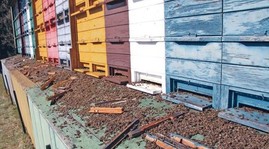 A pesticide kill that resulted in piles of dead bees out front of their colonies. Photo credit: http://www.centerforfoodsafety.org/issues/304/pollinators-and-pesticides/press-releases/2053/uk-parliamentary-commission-calls-for-moratorium-on-bee-killing-pesticides# A pesticide kill that resulted in piles of dead bees out front of their colonies. Photo credit: http://www.centerforfoodsafety.org/issues/304/pollinators-and-pesticides/press-releases/2053/uk-parliamentary-commission-calls-for-moratorium-on-bee-killing-pesticides# Pesticides need an EPA Risk Assessment in order to be registered and authorized for use. The risk to bees is judged through a calculated Risk Quotient. The criteria of acceptable risks have also become stricter: it is not enough anymore for a pesticide to just not kill bees, to register a product, applicants need to prove that they do not harm any pollination services, biodiversity and hive products. The new regulations made overt and massive bee kills rarer, but they still present some limitations. For one, the Risk Quotients are based on testing done on individual adult bees. But honey bees do not live as individual bees; they are part of a superorganism: the colony. Testing the impact of pesticides on whole colonies is a challenging task. One colony can contain up to 50,000 individuals in a variety of reproductive castes and life stages. With this in mind, Dr. Johnson chose to conduct an in-hive based study in an attempt to solve a problem faced by a select group of California beekeepers (Johnson & Percel 2013). Almonds are a major pollinator crop in the US. With over 800,000 acres of almonds in the Central Valley of California, and about 2 honey bee colonies required per acre, almonds pollination contracts are a major source of revenue for US beekeepers. Additionally, some beekeepers in this region of California also specialize in queen rearing. Each year over 1 million queens are produced in the region. A few years back, those queen producers started complaining that about 80% of their queens were dying after the almond bloom. Was a product used during the bloom responsible? Several pesticides, labelled “bee safe” were indeed applied while flowers were in bloom: fungicides, herbicides and a few insecticides, none of them acutely toxic to bees according to standard testing. One of them in particular, received a lot of blame from beekeepers: the fungicide Pristine. In 2012, Dr. Johnson performed a full hive study to test the effect of Pristine on queen development using field realistic levels of exposure (Johnson & Percel 2013). The colonies were given frames of pollen contaminated with different concentration of Pristine. For comparison, the experiment also provided a negative control (non-contaminated pollen, which should yield no effect on development) and a positive control (contaminated-pollen with a chemical known to impact developing bees: the Insect Growth Regulator Diflubenzeron). The positive control is an essential part of a good scientific study: if no effect can be seen in the positive control, the conclusion should be that the something in the method of application was deficient rather than that the product had no effect. Each colony in the study was used to rear queens and the survival of those queens was followed throughout their development, from egg until emergence. The results showed that the method was appropriate: the positive control was associated with a high level of kill in the queens, as expected. But the different concentration of Pristine did not seem to have an effect on queen survival: the levels were similar to the negative control. So, if Pristine was not killing the queens in CA almonds, what was? The solution to this question was found in the CA Pesticide Database. California is the only US state in which every pesticide application has to be recorded in an official database. This mine of information provides a comprehensive documentation of all pesticide applications since the 1990’s. The database revealed that a certain insecticide was regularly sprayed during bloom on almonds, to control for the Peach Twig Borer. The name of this insecticide: Diflubenzuron. Does that ring a bell? This was the Insect Growth Regulator that was used as a positive control in Johnson’s study. Dr. Johnson performed another study, with the same design, to test different concentration of Diflubenzuron and found a clear dose-response relation: at high concentrations, the product would kill all queens; at moderate concentrations, the product had a marked effect. Interestingly, that product used to be labelled “bee safe”, because when tested on workers, the product did not seem to have such an effect. Pesticide Risk Assessments should represent complete assessments of risk and the examples provided by Dr. Johnson pointed to the limitations of the current standard methods required by regulations. By focusing on individual worker adults, and ignoring the impact on the other castes (such as the queens), other life stages, and whole colony impacts, current risk quotients are under-evaluating the real risk of pesticides to beneficial insects, such as honey bees. Another limitation of standard methods is how they focus on single pesticide exposure. We know that bees are never exposed to only one product at a time: 96% of pesticide applications are performed as “tank mixes” where several products are mixed together. Despite the confusion surrounding Colony Collapse Disorder, honey bee population trends, and mortalities, one thing can be certain: beekeepers in the US are losing an unacceptable number of colonies every year. So far, beekeepers have been able to keep up with their losses by splitting colonies, but at great cost, both in labor and financially. Beekeeping is harder today than it was in the past. As a result, managed bees have become more valuable, and the level of loss that a beekeeper would deem acceptable reduced. While not the only problem for honey bees, pesticide exposure is certainly a noteworthy one. Click here to see more of Dr. Johnson’s work on the effects of pesticides on honey bees (Johnson et al., 2010). References:
Johnson, R. M., Ellis, M. D., Mullin, C. A., & Frazier, M. (2010). Pesticides and honey bee toxicity - USA. Apidologie, 41(3), 312-331. doi:10.1051/apido/2010018 Johnson, R. M., & Percel, E. G. (2013). Effect of a Fungicide and Spray Adjuvant on Queen-Rearing Success in Honey Bees (Hymenoptera: Apidae). Journal of Economic Entomology, 106(5), 1952-1957. doi:10.1603/ec13199 About the Authors: Nathalie Steinhauer is a PhD student working in Dennis vanEngelsdorp’s Lab. She links the risk factors associated with beekeeping management to colony mortality. Andrew Garavito is a Master’s student in Dennis vanEngelsdorp’s Lab. He is studying honey bees; with a focus on the diversity of pollen types brought in by foragers, and the health effects of different pollen diets. Meghan McConnell is a Master’s student in Dennis vanEngelsdorp’s Lab. She is studying mechanical methods of control for the honey bee parasite Varroa destructor. Sexy-smelling compounds provide a promising tool for mealybug management Mealybugs (family Pseudococcidae) are small insect pests commonly an issue in greenhouses and nurseries, especially in warmer climates. Dr. Rebeccah Waterworth, a postdoc in the University of Maryland’s entomology department, did her dissertation work while at the University of California Riverside on mealybugs in a Californian production nursery setting. Mealybugs are among the least apparent of pests. They are small insects and are only easy to see once they have accumulated in large numbers (Figure 1). On top of that, current monitoring methods for mealybugs often involve destructive sampling of plant material, which is problematic if a nursery is trying to produce blemish-free plants. If one could detect them earlier, more options would be available to get rid of them before they start damaging the plants. Figure1: Accumulation of obscure mealybugs. Photo credit Rebeccah Waterworth. Sex pheromones have been successful in other cropping systems (e.g. as a mating disruption method in moths in cranberry, Deutsch et al. 2014); however using sex pheromones as a monitoring technique of mealybugs is relatively recent. The chemistry is ready: sex pheromones of some species of mealybugs have already been isolated in a laboratory setting. By placing sticky traps with a lure saturated in the female sex pheromone out in the field, one can collect the male mealybugs (Figure 2) attracted to the pheromone. The presence of male mealybugs implies that there is in fact a mealybug population present. But could those traps be used to detect, monitor and estimate mealybug population size in a nursery? Figure 2: A mealybug pheromone trap. Photo credit Rebeccah Waterworth. Rebeccah set out to answer these questions in ornamental nurseries in California (Waterworth et al. 2011a). By placing sticky traps out in the field with lures of different pheromone doses she found that the male mealybugs are sensitive to very low doses of female sex pheromone. This is good news, because the mealybug pheromone chemicals (Figure 3) are complex molecules that are difficult and expensive to make in a laboratory setting, so the less one needs, the better. Additionally, she used the pheromone traps to estimate mealybug abundance. First, traps were set out, mealybug males were collected and counted and then compared to the true density of mealybugs found in plant samples. This resulted in a mathematical relationship that can be used to estimate true mealybug abundances in the field. Pheromone based sticky traps can now be utilized by growers to monitor mealybug populations. Figure 3: Structure of the longtailed mealybug mating pheromone. Another potential use for pheromones comes in the form of mating disruption. If enough pheromones are released at once, the male insects become inundated with signals and are unable to follow the trail left by an actual female. Without this path to the female, no mating occurs. Rebecca wanted to determine if mating disruption was a feasible tool for combating mealybugs. In testing this feasibility, Rebeccah learned some interesting aspects of mealybug biology (Waterworth et al. 2011b). First, the three species of female mealybugs she studied are not parthenogenetic, so they have to mate with a male to produce offspring. This was good news: if pheromones could prevent the males from getting to the females, there would be no future generations of mealybugs. Second, female mealybugs live for a very long time for an insect. The longtailed mealybug female, for example, lived up to 137 days in lab trials. Unfortunately this news was less welcome. Because of their long lifespans, pheromone clouds would need to be running continuously in nurseries for over 3 months to keep the males at bay. Although possible, keeping a control system running for that length of time would require a large quantity of synthetic pheromone. Currently, pheromone synthesis is such a complex process that only 5g of pheromone can be produced at a time, which increases costs. Rebeccah’s message was that if this process is simplified in the future, mating disruption could become a feasible control method. In all, Rebeccah’s talk showcased not only the potential uses of pheromone trapping and mating disruption in a new pest system, but also the long process that is necessary for the development of these tools. Future practical applications of these mating pheromones could not be assessed without the comprehensive understanding of mealybug reproductive biology she gained through her research. References:
Deutsch, A., A. Mafra-Neto, J. Sojka, T. Dittl, J. Zalapa, and S. Steffan. 2014. Pheromone-based mating disruption in Wisconsin cranberries. Wisconsin State Cranberry Growers Association. Waterworth, R. A., R. A. Redak, and J. G. Millar. 2011a. Pheromone-baited traps for assessment of seasonal activity and population densities of mealybug species (Hemiptera: Pseudococcidae) in nurseries producing ornamental plants. J. Econ. Entomol. 104: 555-565. Waterworth, R. A. I. M. Wright, and J. G. Millar. 2011b. Reproductive Biology of Three Cosmopolitan Mealybug (Hemiptera: Pseudococcidae) Species, Pseudococcus longispinus, Pseudococcus viburni, and Planococcus ficus. Ann. Entomol. Soc. Am. 104: 249-260. About the Authors: Olivia Bernauer is a first year Master’s student in Dennis vanEngelsdorp’s bee lab working with wild, native bees. Olivia is currently working with volunteers to monitor the diversity and floral preference of Maryland’s native bees. Becca Wilson is a third year PhD student in Bill Lamp’s lab. She is studying the distribution patterns and societal impact of nuisance black flies in western Maryland. Invasive Mosquito Can’t be Blamed for Spread of La Crosse Encephalitis La Crosse encephalitis is a rarely seen viral disease spread by infected mosquitoes. Typical infections present with flu-like symptoms lasting 2-3 days. Rarely, infections can lead to swelling in the brain (encephalitis) which can lead to seizures, brain damage, and, in extreme cases (<1%), death. Around the same time that LACV was invading Appalachia another pest was spreading throughout the region, the Asian Tiger Mosquito (Aedes albopictus). Notable for its love of human blood, voracious appetite, and habit of feeding all day long, A. albopictus also transmits several dangerous viruses, including LACV. Could A. albopictus be responsible for the rise in LACV infections in the Appalachia? 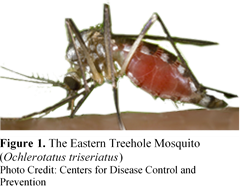 Historically, infections of the La Crosse virus (LACV) have been confined to the Midwestern United States, but since 2003 there has been a steady unexplained rise in the number of infections reported from the Southeastern United States (Appalachia). The mosquito that transmits the virus, the Eastern Treehole Mosquito (Ochlerotatus triseriatus), was already present in Appalachia, so the recent spread of the disease couldn’t be blamed on an expansion of the host’s range; another culprit had to be responsible. 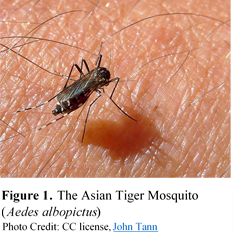 Doctor Sharon Bewick at the University of Maryland was part of a team that built a set of models to try and answer this question. Using research from 45 different academic publications they built models that factored in the survival and ability to transmit disease of the two mosquito species. They were then able to predict what transmission would look like in ecosystems with the native mosquito alone, the invasive alone, and with both species coexisting. Dr. Bewick predicted if LACV would spread or go extinct in the different models. While the majority of model runs with O. triseriatus indicated that the disease would spread, A. albopictus alone could not spread the disease, and in combination with O. triseriatus, the spread of LACV was lessened. The original models did not account for seasonal changes in transmission and infection, such as overwintering of mosquitoes and a large decrease in the amount of host immunity in the following year. Further model development incorporated these dynamics, and the results still indicated that disease persistence would decrease with the presence of A. albopictus under inclusion of these more realistic parameters. Why then might LACV decrease with A. albopictus presence? The models indicated that a higher biting rate, higher adult survival, and higher larval carrying capacity are the most important factors in promoting the spread of LACV in individual species models. In the model with both species, however, a slower growth rate and lower larval carrying capacity of A. albopictus along with a decrease in competitive pressure from A. albopictus on the native species led to higher persistence of the disease. This indicated that larval competition may strongly influence the outcome of the model dynamics. Aedes albopictus bite more indiscriminately and bite more humans. A. albopictus is thus less likely to pick up the virus from an infected blood meal as the meals are less likely to be from hosts that can amplify LACV. Additionally, competition between the two species’ larvae can alter the carrying capacities and survival of the native species. Consequently, competitive displacement of the native species, which does bite primarily on LACV amplifying hosts, by the invasive species, which does not, can cause a decrease in LACV spread. However, Dr. Bewick’s models made assumptions about larval competition between the species based upon direct lab competition experiments. The two species do not always overlap in time and space. For example, A. albopictus is likely to be found in urban settings, while O. triseriatus is more likely to be found in the woods. Additionally, the period of time when larvae are developing does not always overlap. Therefore, the larvae of these two mosquitoes may not be directly competing in the way the models predict, which may lead to misleading predictions about the disease’s spread. Who or what is responsible for the increase in LACV? While it appears that the A. albopictus may not be the culprit, there is another invasive mosquito which may be responsible for the spread and that deserves further investigation. The Asian Bush Mosquito (Aedes japonicus japonicus) is less-well studied than the A. albopictus and is also a newer invader that appeared at about the right time to coincide with the spread of LACV, and it is also a competent vector. Future research will involve investigating whether the Asian Bush Mosquito may be the mosquito responsible for the increased spread of LACV. References: Leisnham, P.T. & S.A. Juliano. 2012. Impacts of climate, land use, and biological invasion on the ecology of immature Aedes mosquitoes: Implications for La Crosse Emergence. EcoHealth 9:217-228. doi: 10.1007/s10393-012-0773-7 http://www.cdc.gov/lac/tech/symptoms.html About the Authors:
Peter Coffey is a Master's student whose research focuses on using cover crops to optimize sustainable farming economics. His current projects using lima beans and eggplant as model systems focus on plant nutrition, weed suppression, influences on pest and beneficial insects, and crop yield value. Follow him on twitter at @petercoffey. Becca Eckert is a Ph.D. student whose research focuses on how algae growing on leaves in headwater streams affect macroinvertebrate performance (e.g., growth) and biodiversity within leaf packs. Mathematical Modeling as a Tool in the Fight Against Malaria The study of infectious disease epidemiology has had a fairly long history. For several hundred years, scientists have studied disease outbreaks. Notably, Ronald Ross and Daniel Bernoulli produced various models to accurately predict and track the spread of infections throughout a human population. These models, which were applied to diseases such as smallpox and plague, took into account several important features of the outbreak including the number of people infected and the percentage of the vector (the insect that transmits a disease to humans) containing the actual pathogen. One of the most prominent diseases to which models have been applied is malaria, which is caused by the protozoan Plasmodium. Dr. John Marshall, assistant professor in the School of Public Health at the University of California, Berkeley, has for several years been using modeling to predict the outcomes of certain control strategies for malaria. Malaria follows many general rules used in non-specific modeling of disease transmission (see Figure 1), but has some unique aspects like incubation period (the time in which the parasite needs to grow inside the mosquito). The models account for host parameters including whether the patient is symptomatic, the patient’s immunity and the patterns of how people travel. This last tenet is especially important as human population movement affects how malaria itself actually spreads. Vector parameters contribute to the model as well, such as how long the mosquito lives and its sensitivity to climate and geography. Ultimately, the model can be tested against data from a real outbreak and then tweaked to fit the data more precisely. 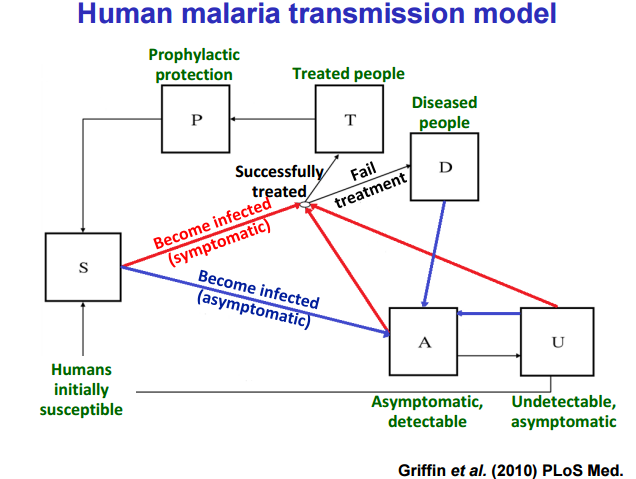 Figure 1: Complexity of the Malarial Transmission Model. This diagram represents the factors that must be accounted for when making predictions about the spread of malaria through human populations. Important factors include whether the patient shows symptoms that doctors can see and if the patient can be treated in time. |
Categories
All
Archives
June 2024
|
Department of Entomology
University of Maryland
4112 Plant Sciences Building
College Park, MD 20742-4454
USA
Telephone: 301.405.3911
Fax: 301.314.9290
University of Maryland
4112 Plant Sciences Building
College Park, MD 20742-4454
USA
Telephone: 301.405.3911
Fax: 301.314.9290

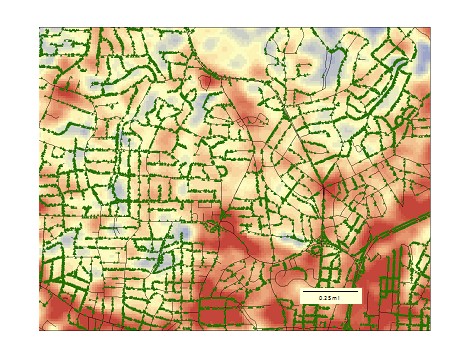


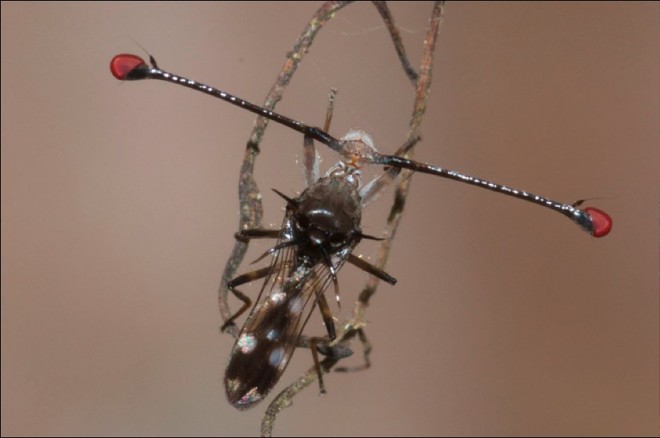

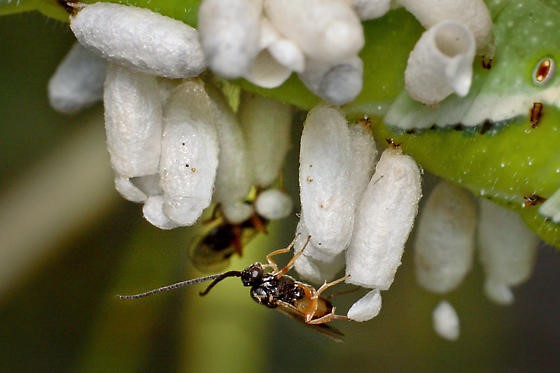
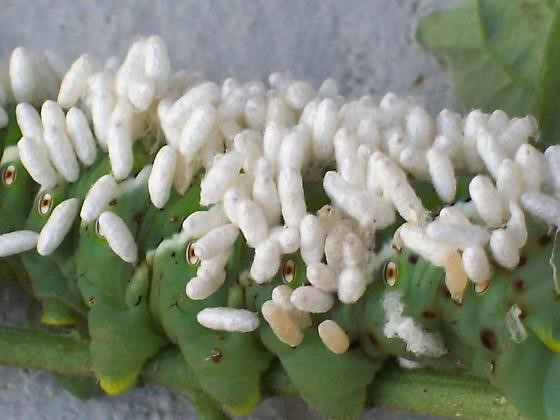
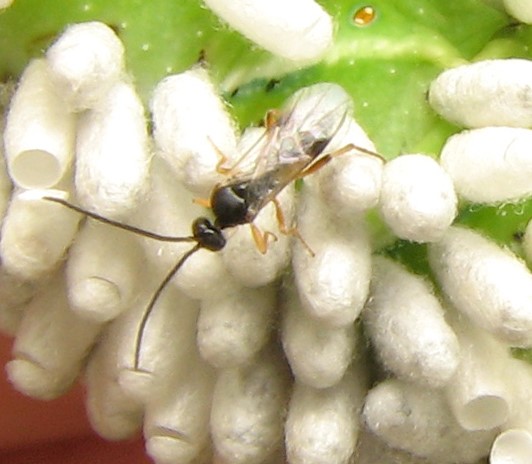
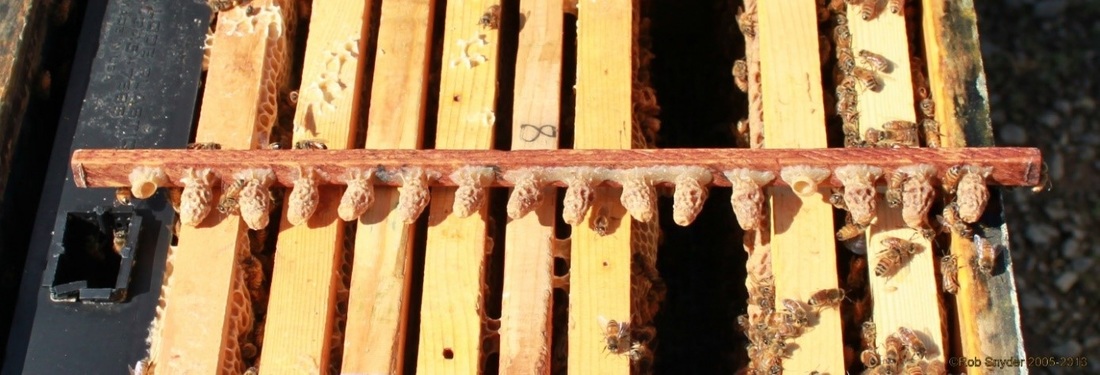
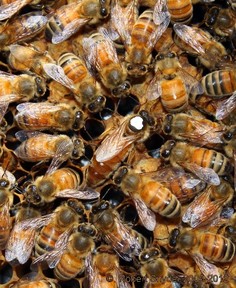
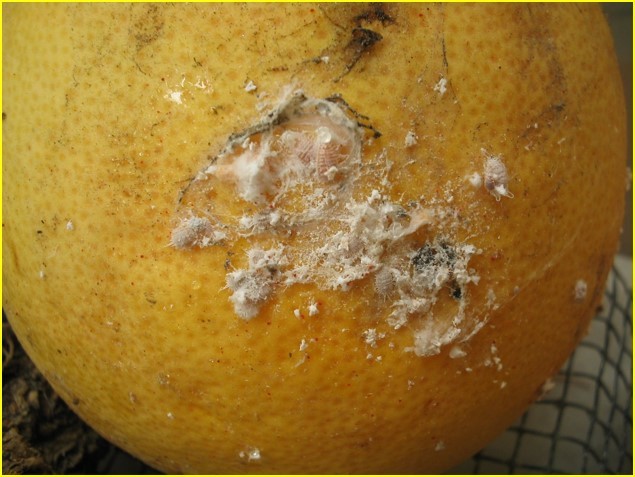
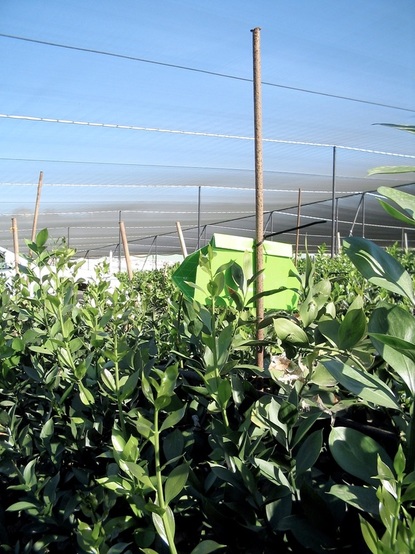
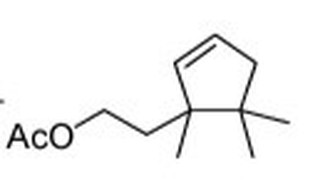
 RSS Feed
RSS Feed




